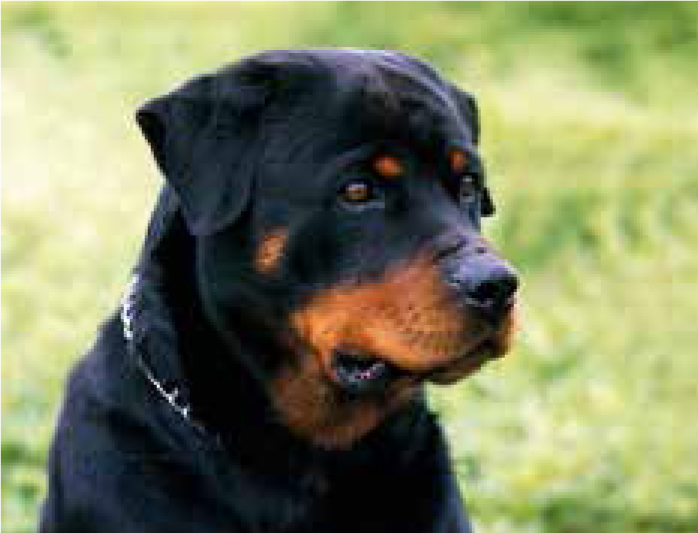The Rottweiler is an easily recognisable and relatively common breed in the UK. Originally used for herding cattle, protection and pulling carts in the 19th century, their usefulness declined during the industrial revolution, but the breed regained popularity as a police and armed forces dog. However, the Rottweiler is again in decline in the UK. Kennel Club registrations for pedigree Rottweilers dropped from 1.6% of all registrations in 2007 to 0.7% in 2016. The reasons behind changing popularity of individual breeds are complex. Public perceptions of breeds as well as media portrayal all play varying roles. This VetCompass™ study covered 5321 Rottweilers from 304 UK primary-care veterinary clinics and confirms reducing popularity, with the Rottweiler dropping from 1.75% of all puppies born in 2006 to 1.07% in 2013.
This study shows that the most common disorders diagnosed in Rottweilers were aggression (prevalence 7.46%, 95% CI 6.40–8.64), overweight/obesity (7.06%, 95% CI: 6.02–8.21), otitis externa (6.14%, 95% CI: 5.18–7.23) and degenerative joint disease (4.69%, 95% CI: 3.84-5.66) (Table 1). Owners can then be advised on important preventive strategies (e.g. dietary advice to control obesity).

Table 1. The most common disorders diagnosed in Rottweilers in the UK
| Rank | Fine-level disorder | Overall prevalence % | 95% CI |
|---|---|---|---|
| 1 | Aggression | 7.46 | 6.40–8.64 |
| 2 | Overweight/obesity | 7.06 | 6.02–8.21 |
| 3 | Otitis externa | 6.14 | 5.18–7.23 |
| 4 | Degenerative joint disease | 4.69 | 3.84–5.66 |
| 5 | Diarrhoea | 3.50 | 2.78–4.36 |
| 6 | Dental disease | 3.05 | 2.37–3.86 |
| 7 | Nail clip | 3.05 | 2.37–3.86 |
| 8 | Pyotraumatic dermatitis | 2.91 | 2.25–3.70 |
| 9 | Cruciate disease | 2.32 | 1.73–3.04 |
| 10 | Anal sac impaction | 1.82 | 1.30–2.47 |
Aggression in Rottweilers was historically useful in working animals, but may no longer be desirable in pet Rottweilers. Aggression was the most common disorder identified, but males were almost twice as likely as females to be diagnosed with aggression (9.36% versus 5.47% respectively, p=0.001). The astute veterinary nurse could make clients aware of this propensity to aggression in the breed overall and could perhaps suggest bitches as a less risky family option for owners intent on acquiring a Rottweiler.
Expected lifespan is another critical piece of information for current and prospective owners. The median longevity of dogs overall in the UK is 12.0 years, but the median longevity of Rottweilers in this VetCompass™ study was much shorter, at just 9.0 years. However, female Rottweilers lived on average 9 months longer than male Rottweilers (9.5 years vs 8.7 years, p=0.002). Awareness of options to defer the probability of pet death by selecting a more long-lived sex may be a useful advisory tool for the veterinary nurse.
The median adult bodyweight of Rottweilers overall was 44.9 kg. However, adult male Rottweilers were on average 7 kg heavier than adult female Rottweilers (48.5 kg vs 41.5 kg, p<0.001). Explaining these results can assist prospective owners to match their expectations with the later reality of their dog's size. Bodysize has multiple implications including financial cost of feeding and veterinary care, logistical issues around housing and travel by car, and also social acceptability.
This study is just one of over 30 papers published based on VetCompass™ data shared by over 500 UK veterinary clinics. Further information on VetCompass™ can be found at https://www.rvc.ac.uk/vetcompass.


